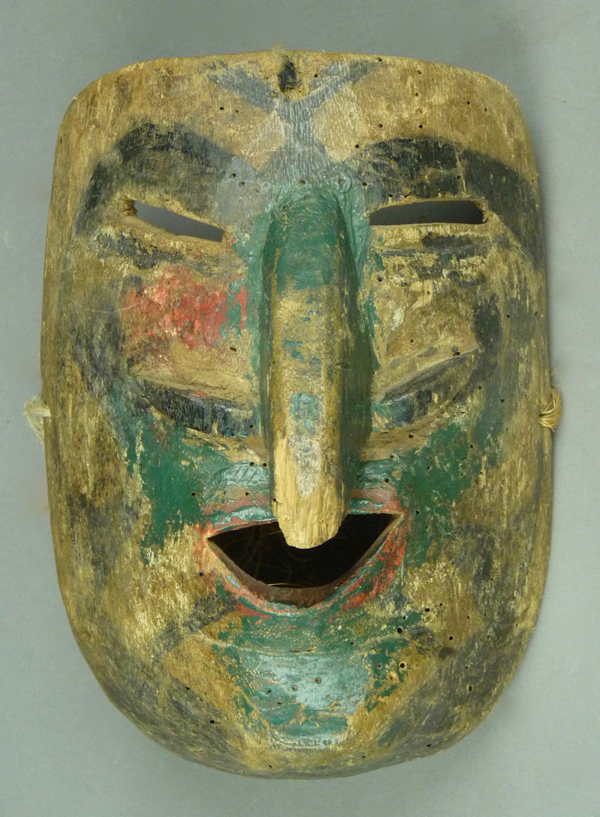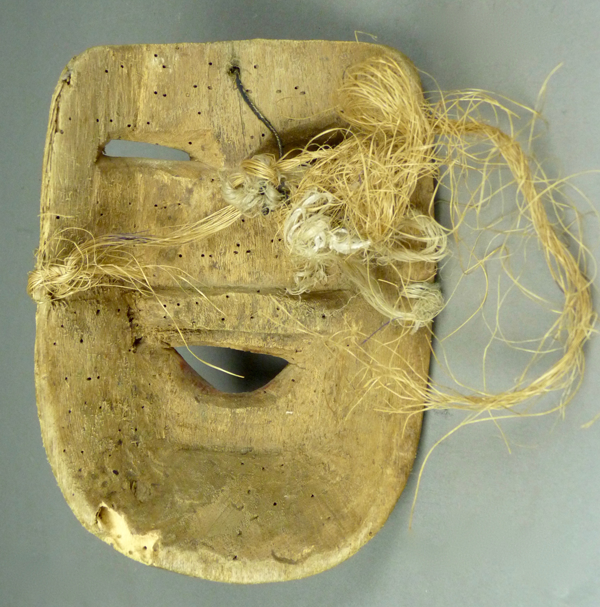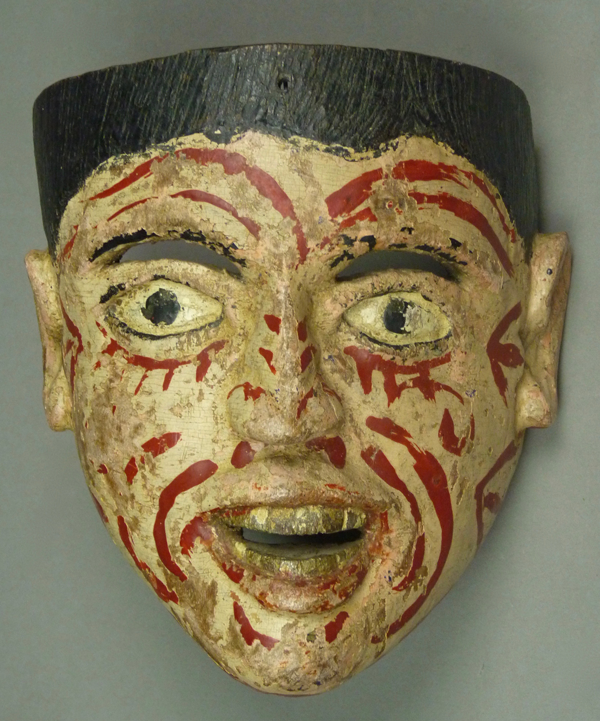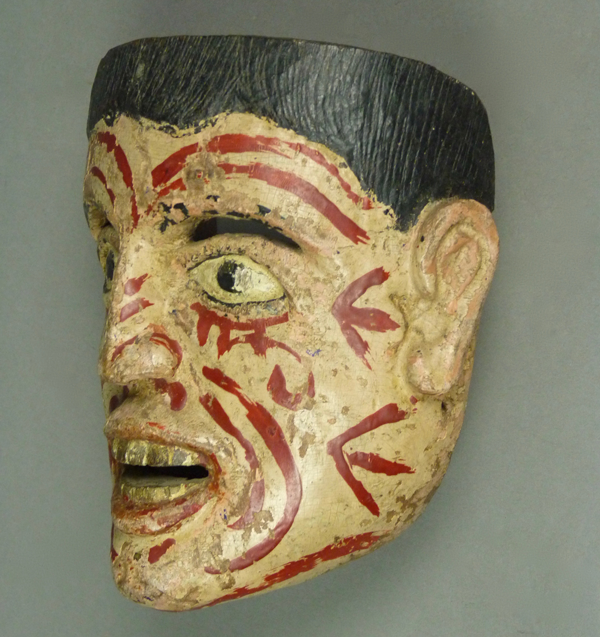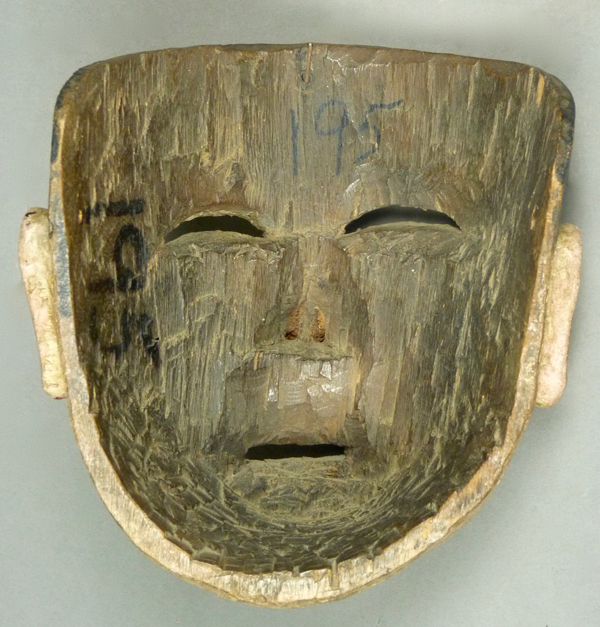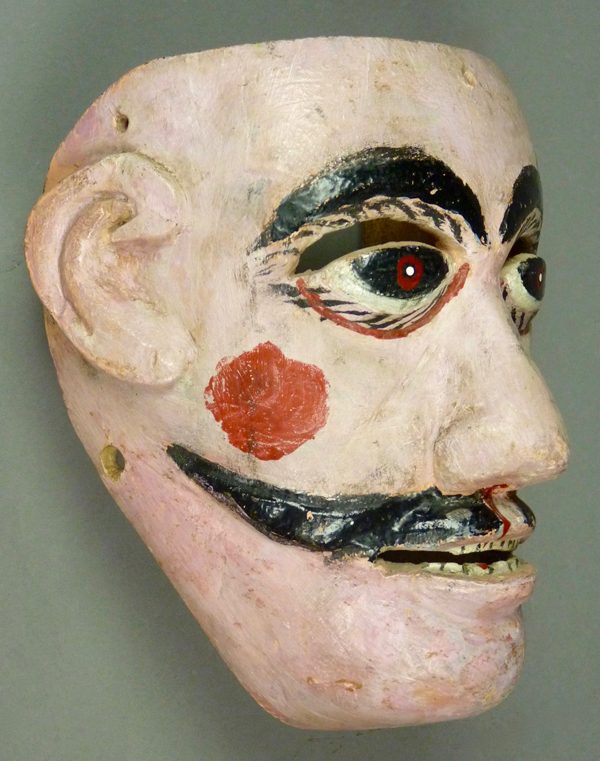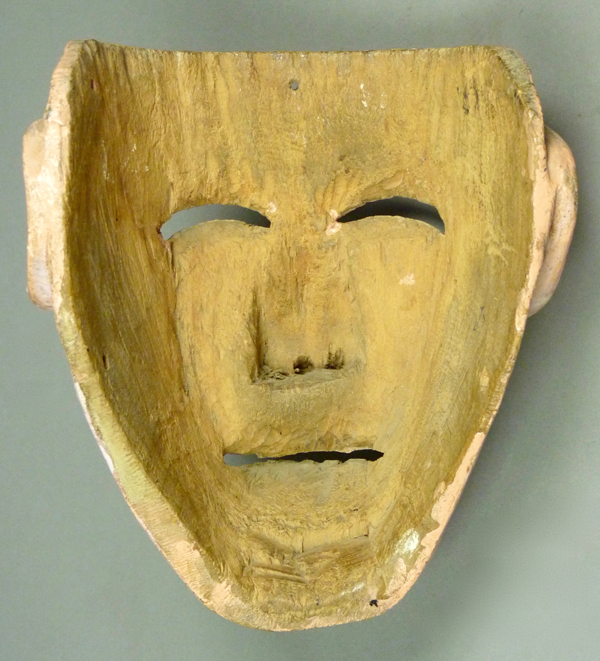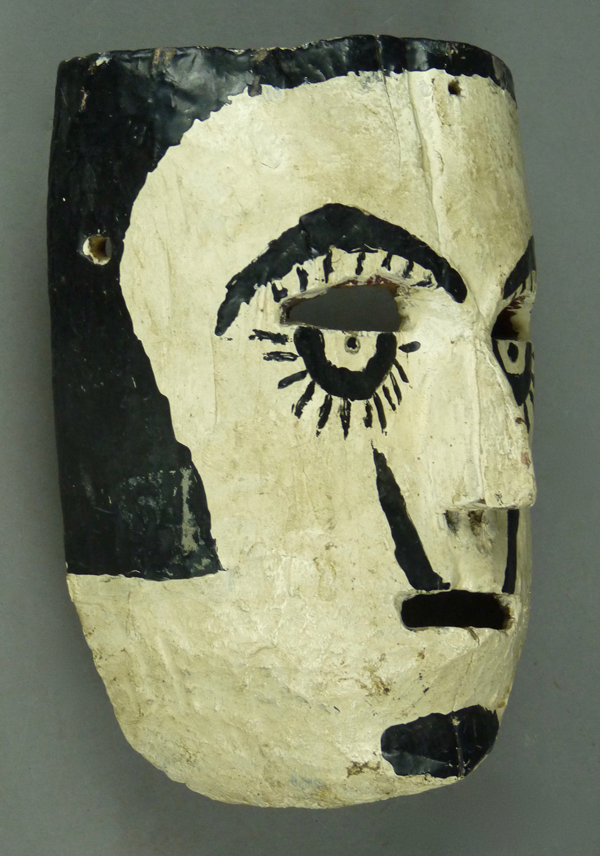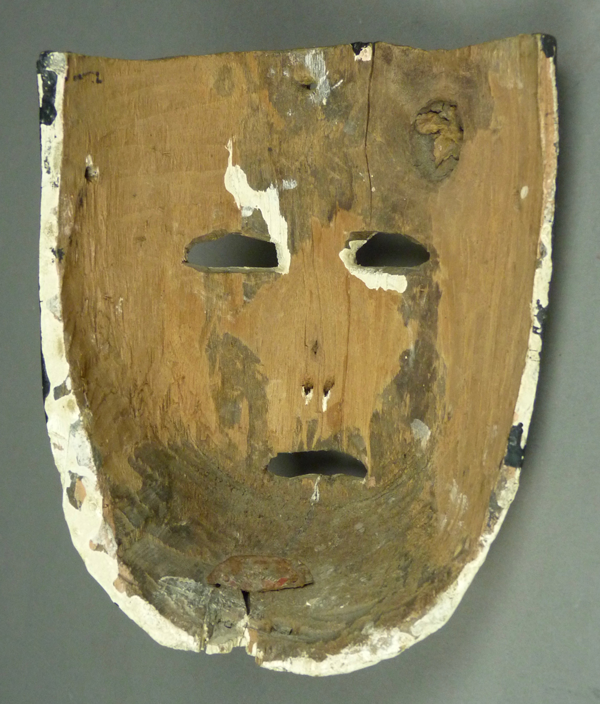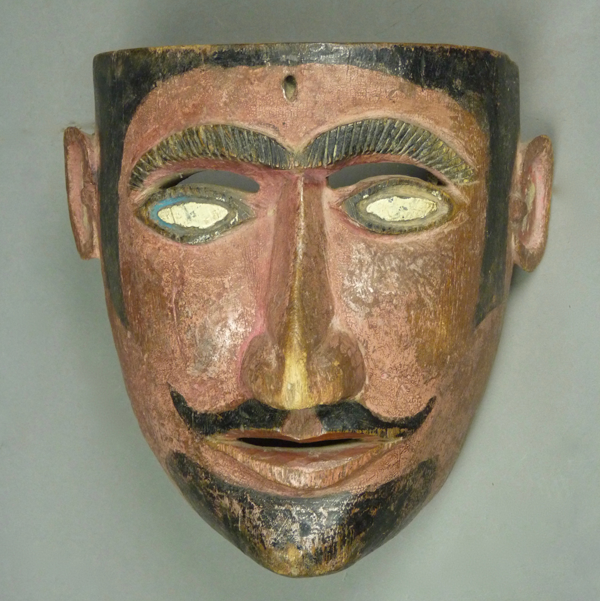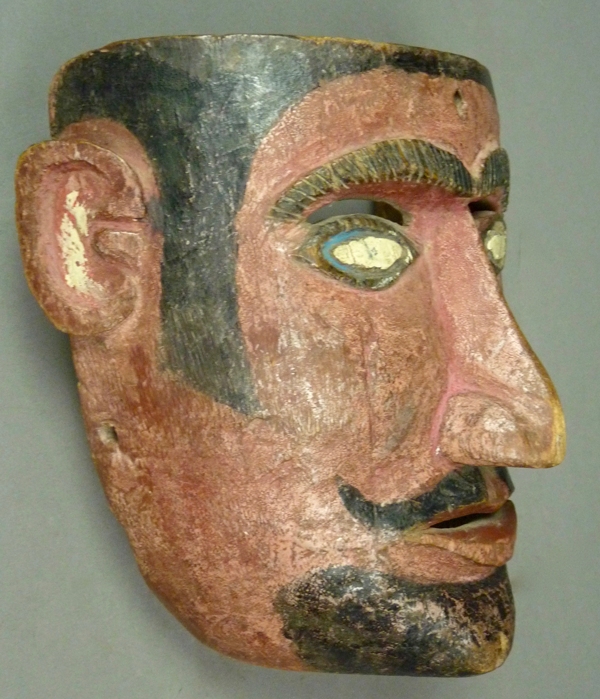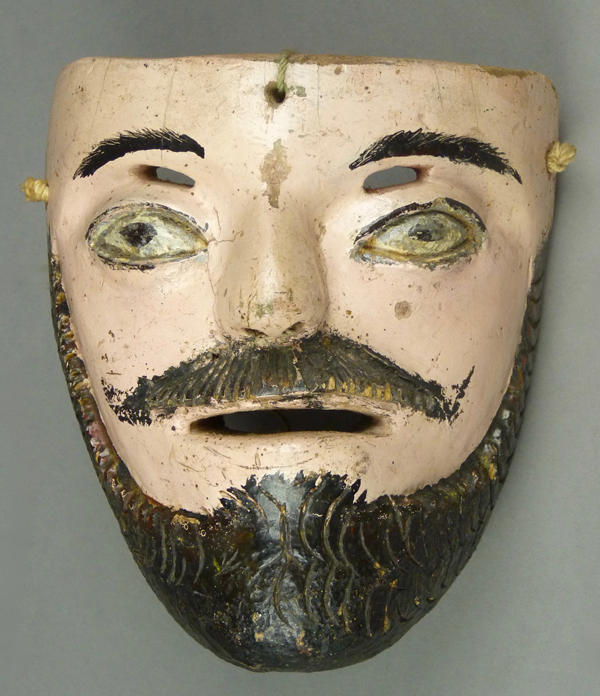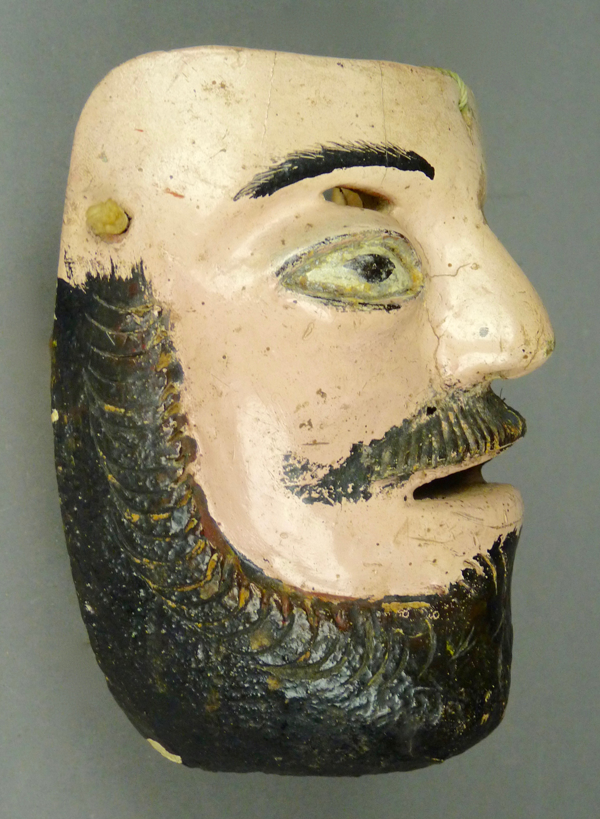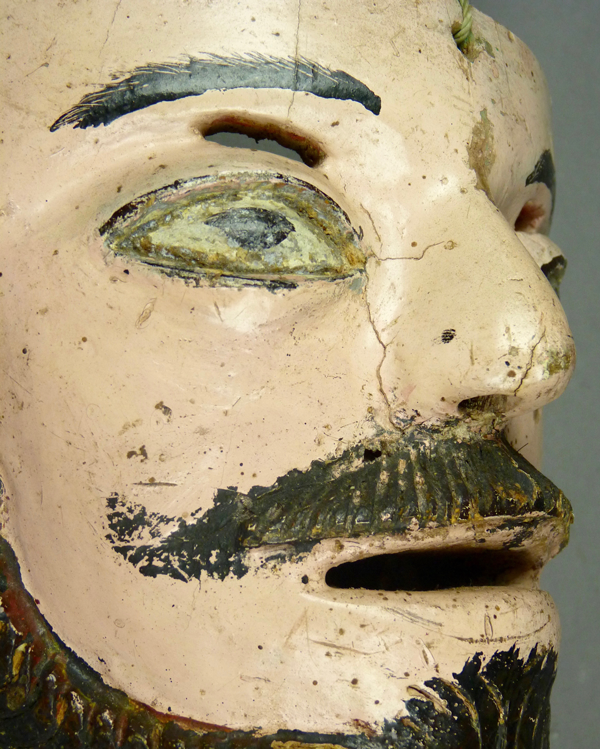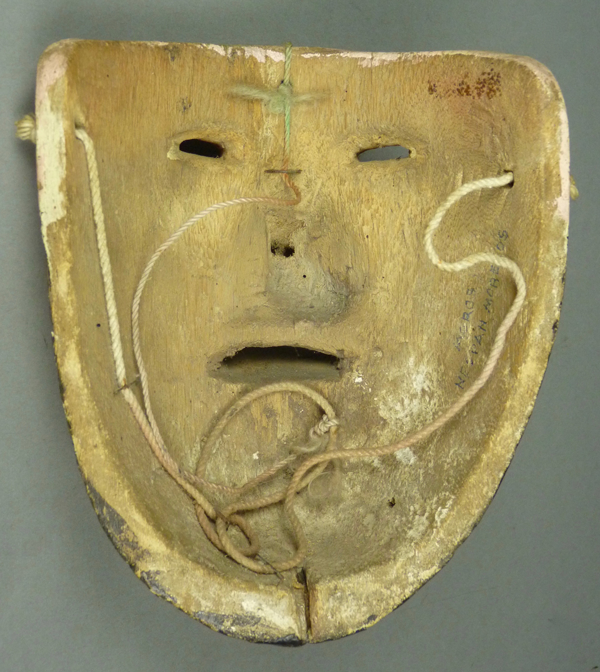After digging through my collection of masks, I am nearly finished with those from the Moros y Cristianos dance and related dances. In this post I bring together a variety of unusual but interesting masks from these dances, which did not fit so neatly with others from their respective states. Almost all of them are special gems in terms of artistry and rarity, but no two are alike.
The first, a gift from Robin and Barbara Cleaver in 1988, was reportedly a Moro mask from the Mexican State of Puebla. Moors with green faces are uncommon in Mexico. In my view, as you may recall from my posts about Xantolo masks from Hidalgo and Veracruz, masks with unrealistic colors such as yellow, blue and green, are frequently worn by dancers who depict the bodies or souls of the dead.
https://mexicandancemasks.com/?p=5116
One could suppose that this mask might represent a Moor or Santiaguero that has been recycled for some other dance such as Xantolos or Carnaval (Mardi Gras).
I have long admired the jolly mouth on this mask.
There is a long sharp nose, which could remind us of Santiaguero masks from Puebla,if we were not distracted by the garish green paint. I like the relief carved mustache. The tiny holes indicate that this mask was once infested with wood boring insects. Fortunately the face of the mask was not damaged by those invaders.
This mask is 7 inches tall, 5 inches wide, and 3 inches deep.
The back does have small areas of damage from the insect infestation. It is stained from long use.
The next mask, which I obtained from Jaled Muyaes and Estela Ogazon in 1997, is the only other mask in this post from el Estado de Puebla. It was worn by a Huezquixtle/Hueyquixtle (or Payaso), a ceremonial clown in the Moros Y Cristianos dance and in Carnaval. Moya Rubio wrote about these clowns in his book—Máscaras: La Otra Cara/ Masks: The Other Face (3rd edition, 1986, pp. 117, 154, 155, and 159, plates 120, 185, and 190). In my experience, these masks are uncommon or rare.
This mask does make one think of the Huehues from the Sierra de Puebla, and there are Payasos in those dances, but this manner of painting is really unusual.
This mask is 6½ inches tall, 6½ inches wide, and 3¼ inches deep.
In this view, one can observe the the ears were probably carved separately and then applied.
The back is stained very darkly from long and heavy use. The number 195 (in pencil and black paint) identifies this as yet another mask that was exhibited in the 1981 UNAM show in Mexico City. It would have been collected in the 1960s or 70s and carved circa 1950 or earlier.
I purchased the third mask from the estate of my friend, Gary Collison, in about 2008. I cherish it as my only example of the Moors and Christians masks from Totoltepec, in the Estado de Guerrero. A series of these masks can be found in one of my favorite reference books—Museo Nacional de la Máscara: Catálogo (n.d., pp 36-38, plates 57, 64, 65, 66, 67, 70). The painted wound indicates that this mask portrayed a Moro, as the Christians, under God’s protection, suffer no injury.
I like the expressive face on this mask.
The mustache and ears were carved in relief.
This mask is 8½ inches tall, 7½ inches wide, and 4½ inches deep.
The back has significant staining from use.
This white Moro, which I purchased from Jaled Muyaes and Estela Ogazón in 2005, is said to be from the Mexican State of Hidalgo.
This fierce little mask has a very simple design. Imagine a hoard of these bearing down on you in a village street, carrying machetes.
This mask is 7½ inches tall, 5¾ inches wide, and 3 inches deep.
Note the knothole above the right eye.
I bought this mask from the Cavin Morris Gallery, in Manhattan, in 1994. It was said to be an Español from Veracruz.
The mask has blue eyes, suggesting that it represents a character of positive polarity. Maybe it is a Santiaguero? It is a magnificent mask, very well carved and obviously worn.
Such elaborate ears are found in the Sierra de Puebla areas of Puebla and Veracruz, and in those areas the Santiagueros have red faces.
This mask is 8 inches tall, 8 inches wide, and 3½ inches deep.
This is an old mask, probably from the mid 20th century.
When I purchased this last mask from Jaled Muyaes and Estela Ogazón in 1997, Jaled noted that it was from the Estado de Morelos, and that Moor masks from that state are rarely seen. It is finely carved.
The eyes were carved in deep relief. The vision openings are very delicate, as if not to compete with the eyes. The mustache was also carefully carved, but this is obscured by layers of overpainting.
The features are delicately carved.
This mask is 7 inches tall, 5¾ inches wide, and 3 inches deep.
The back has good age. The hollow for the nose was too shallow, so it was exposed to frequent skin contact, which polished and stained that area. More typically the hollow area is deeper and escapes such staining.
Next week I will show a group of Moors from Oaxaca, with faces of molded cloth.
Bryan Stevens

